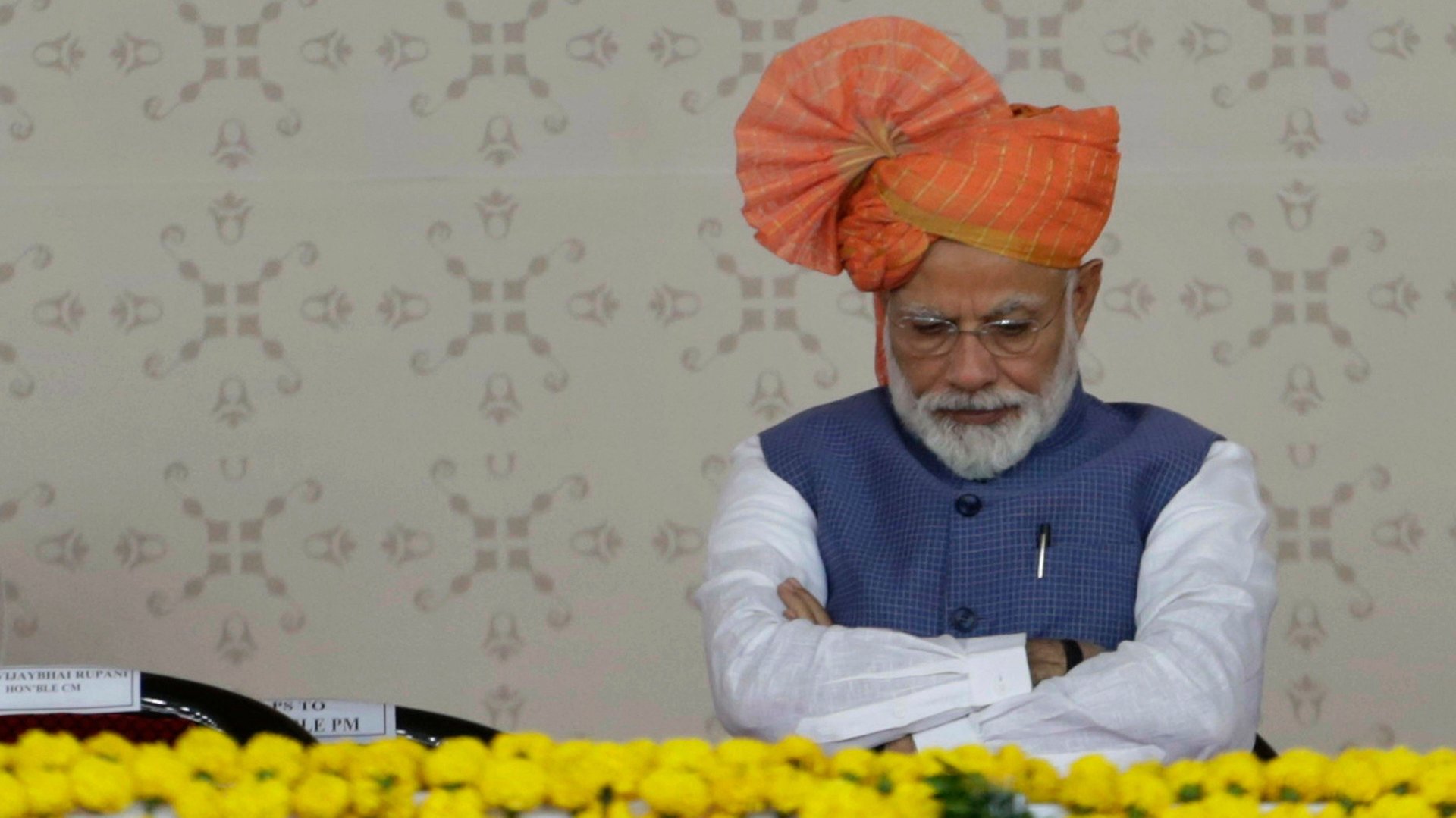There’s only one reason why India’s economy has survived Modi
India’s economy is flying on a single engine—consumer spending.


India’s economy is flying on a single engine—consumer spending.
Be it on air travel, buying smartphones, online shopping, or purchasing an automobile, Indians are loosening their purse strings, which, in turn, is fueling economic growth. It has helped that the country has a largely young population, high on disposable income and aspirations.
On the other hand, the other cylinders of the economy have not fired. Factory output has been sluggish, investments remain subdued, foreign investors are fleeing, job creation is abysmal, and the number of stalled projects have increased.
So, if prime minister Narendra Modi boasts of captaining the world’s fastest-growing economy, he has only the Indian consumer, and his own government’s spending, to thank. “Over the past few years, private final consumption expenditure and government final consumption expenditure have been the primary growth drivers of Indian economic growth,” a report by India Ratings & Research released earlier this year, noted.
And no one’s complaining—at least for now. But the cracks in the wall are becoming clearly visible.
Aviation
India’s aviation sector has been flying high. The domestic aviation market in the country was the fastest-growing in the world for the fourth year on the trot last year. In fact, by 2025, India is expected to be the third-largest market for aviation in the world.
There are caveats, though. Volatile crude prices, a weak rupee, and intense competition has led to turbulence in the market.
In the last few months, India’s oldest private airline Jet Airways has been struggling to stay airborne. Others such as IndiGo, the country’s leading airline by market share, and the no-frills carrier SpiceJet have also posted losses in certain quarters of this financial year.
Automobiles
A similar story has been playing out in the automobiles sector. It is expected that India will emerge as the world’s third-largest passenger vehicle market by 2021, according to the London-based market researcher IHS Markit.
But in the last few years it has been a bumpy ride for the sector that was hit by the note ban of 2016, introduction of the goods and service tax (GST) in 2017, and the ban on the sale of Bharat Stage (BS)-III emission norm-compliant vehicles from April 2017.
The country’s largest carmaker, Maruti Suzuki, announced a year-on-year fall in its net profit for the October-December quarter. In the same period, another industry major, Tata Motors, also reported a loss. Change in policy norms, higher fuel prices, and the popularity of ride-hailing apps has meant that the sector is losing steam .
An industry that is used to double-digit growth may now have to get used to sub-10% growth, believe analysts.
Smartphone sales
Indian are so crazy about the gadgets that one in 10 smartphones are sold in India. Last year, the segment registered a growth of 14.5% as 142.3 million units were shipped.
However, Indian companies are not the ultimate winners. Chinese phonemakers such as Xiaomi, Vivo, Oppo, and Huawei have been the biggest beneficiaries. Better price points and offers by Chinese companies have managed to swing customers away from Indian brands.
Telecom service providers, too, have been suffering after country’s richest man, Mukesh Ambani, entered the fray in 2016 with Reliance Jio. According to hiring firms, telecom companies may have let go of nearly 90,000 employees in 2018, thanks to the disruption. Intense competition and lower tariffs have taken the sheen out of the sector.
E-commerce
Indians are logging in to buy everything from groceries to jewellery online. As a result, the gross merchandise value (GMV, or the total value of goods sold on a marketplace) has been increasing exponentially.
Sales in India’s e-commerce market currently stands at $38.5 billion and is expected to leapfrog to somewhere between $125 billion and $150 billion by March 2020, according to Care Ratings.
But due to recent policy flip-flops this growth, too, may get derailed.
Even though the new e-commerce policy may appease traditional brick-and-mortar retailers, it will be a big blow to online companies, more so, the big foreign players that command a substantial share of the market. Amazon and Flipkart may end up losing between Rs35,000 crore and Rs40,000 crore, thanks to the new foreign direct investment (FDI) rules, ratings agency Crisil had noted.
“Foreign investors keenly watch to see that there are no political or economic uncertainties, which we have seen in the case of India. There have been some policy flip-flops, like in the case of angel tax or e-commerce (regulations) which can drive away global funds,” Devendra Kumar Pant, chief economist at India Ratings, had told Quartz earlier.
Is it sustainable?
Economic growth fuelled by consumption or by government spending is healthy only as long as it is supported by a corresponding growth in industries and investment. “Consumption-led growth can arguably lead to a slackening of future growth if it entails growing imbalances due to limits to capacity creation, and rising debt burdens, particularly for households,” read a report by the Reserve Bank of India released in 2017.
Considering India is such a large consumer market, consumption-led growth is inevitable but it becomes problematic if it is not supported by a corresponding overall growth, believe economists.
In fact, by 2030, India is on course to witness a 4x growth in consumer spends, according to a report by the World Economic Forum released earlier this year. “It will remain one of the youngest nations on the planet and will be home to more than one billion internet users. The new Indian consumer will be richer and more willing to spend, and unlike her predecessors, she will have very specific preferences,” it said.